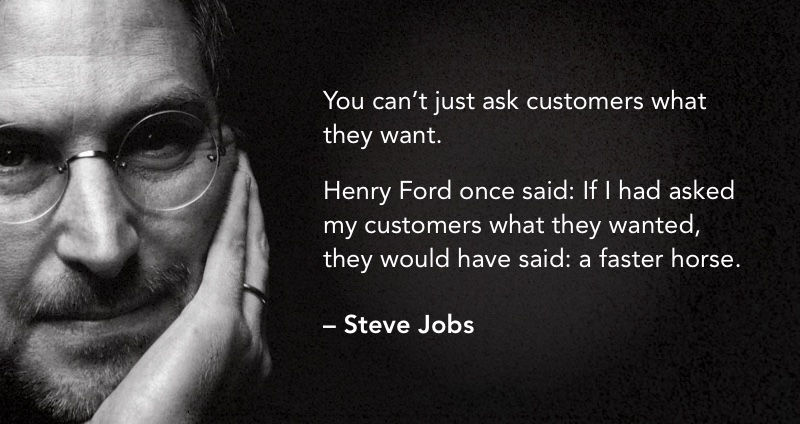#1.
What is product-market fit?
Product-market fit is the perfect match between a product/concept and its market. In simple terms, it's when a concept appeals to consumers that it finds its place in the market.

#2.
Why is product-market fit so important?
PMF is the goal of every entrepreneur, the key to success.
If your concept does not achieve its goal(s), it is bound to fail in the end, even if your idea is good.
It is a concept that is easy to grasp, but harder to achieve. Some people get lucky and find their PMF right away, but usually it is a process of testing and research that takes time.
Once you have achieved your PMF, you can take your concept to market on a larger scale. But beware: you need to find your PMF first before you can think about developing your growth.

Some people spend too much time and money on paid marketing and partnerships to prepare for the launch of their concept, but if the product did not find its target, their efforts were in vain.
Example of PMF for a project developed by Deuse:
Tafsquare:
Tafsquare is a company that connects individuals with construction professionals through a web platform.
To achieve this result, the company made gradual adjustments until they found what really worked.

Initially, the project aimed to connect professionals from all sectors. Then they focused their platform exclusively on construction professionals. Eventually, Tafsquare became the current platform that allows individuals to find construction professionals. Thanks to all these changes, they achieved their PMF.
#3.
How do you achieve product-market fit?
Choose your product category:
You can choose the category of new products/concepts (which carries more risk) or the category of already existing products/concepts (with more competition and expectations but less risk because customers already know how to compare and buy products like yours).
The ideal situation is to find your place between the two markets.
For pre-existing products/concepts, you need to analyse the market, understand the segments and figure out how you could fit in.

To achieve this, you can copy a concept that is already on the market, but this will cause you a lot of problems AND it will be difficult to come out on top in your particular category.
A good solution is to copy part of a concept that is already on the market and add something new to it. Andrew Chen (general partner at Andreessen Horowitz and advisor and investor in technology start-ups) suggests copying 80% and innovating 20%. So create a product/service that consumers understand perfectly, with a sufficiently clear innovation.
Usually, you will have to think about the market, the differentiation area, etc., to achieve the PMF.
Gather feedback from your users:
When you launch a concept in the market, collect feedback from your first users. This feedback will help you know whether you are on the right track (or not).
You can talk to your users to find out what they think of your concept. This way, you will find out which elements you will still need to focus on.

For example, you can also send them a questionnaire to find out more. You can write one yourself or use existing questionnaires to validate the PMF.
Feedback from users can be useful, but it is not mandatory. Remember that people don't always know what they want.
Steve Jobs was not a fan of market research. He even thought it was a waste of time...
He used to say, "It is not the job of consumers to know what they want".

So this brings us to the next point: besides collecting opinions from users, you should also analyse their behaviour, because there is a difference between what they think and what they do.
Analyse your users' behaviour:
Besides researching what your customers think of your concept, you should also look at what they do and how they behave. It is therefore appropriate to measure your users' engagement.
For this, focus on retention, as this is one of the most important metrics for validating your PMF.
Buying your product/concept is a first step towards your PMF, but if your customers continue to use it, this is an even more important validation.
After all, a purchase without use may say that your marketing campaign is good, but not necessarily your concept.
Make adjustments if necessary:
If you are struggling to reach your PMF, don't be afraid to adjust your concept or even completely change it if necessary.
Small changes:
You have realised that you are on the right track thanks to the feedback and behaviour of your users.
Carefully distinguish between requests that enable you to achieve the PMF and those that are not useful and threaten to take you further from your goal. You cannot possibly respond to every request.

Analyse your customers' behaviour to see what you can still improve. In this case, it will be small changes rather than a complete turnaround.
Example of a turnaround:
On the contrary, your feedback has made you realise that you have been going in the wrong direction and that you need to make changes if you want to achieve your PMF.
We are talking big changes here, not just adding a few new features. Andrew Chen explains that there is no point in adding features to find your place in the market; you need to rework your concept.
In your feedback and analysis, you may discover that one feature stands out above the rest. You might then decide to focus your concept on this specific feature and drop the ones that don't interest your users.
The problem could also lie with your approach: perhaps you are not targeting the right people, or in the right way.... In that case, update your business plan thoroughly.
Don't neglect feedback from your users and your analytics, as they will tell you what changes you need to make.
If you don't find your PMF in the first few months, you will have to react quickly and (re)develop your product with minor or major changes.
Examples of successful changes:
Instagram:
Instagram began as a location-based photo-sharing application called Burbn. The creators realised that one feature was used much more than the others: photo sharing. So they decided to focus their application on this feature. Burbn evolved into Instagram, the world's largest photo-sharing platform.

YouTube:
Initially, YouTube was a video-based dating site, but the three creators changed their minds a few days after its launch to become the video hosting platform we know today.
#4.
Conclusion
The PMF should be your priority when bringing a product/concept to market, well before your marketing campaigns (if any).
It can take a long time to achieve, so test and improve your concept over and over again until it finds its purpose.
Choose your market carefully (new or existing), survey your users and analyse their behaviour to find out what you still need to change and don't be afraid to adjust things if necessary.
Bear in mind that you will never reach your PMF definitively because the market is constantly evolving, so you actually have to constantly adapt your product.
Do you have a question, a project to develop? Don't hesitate any longer and contact us!



